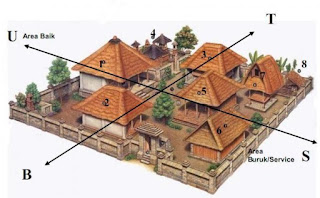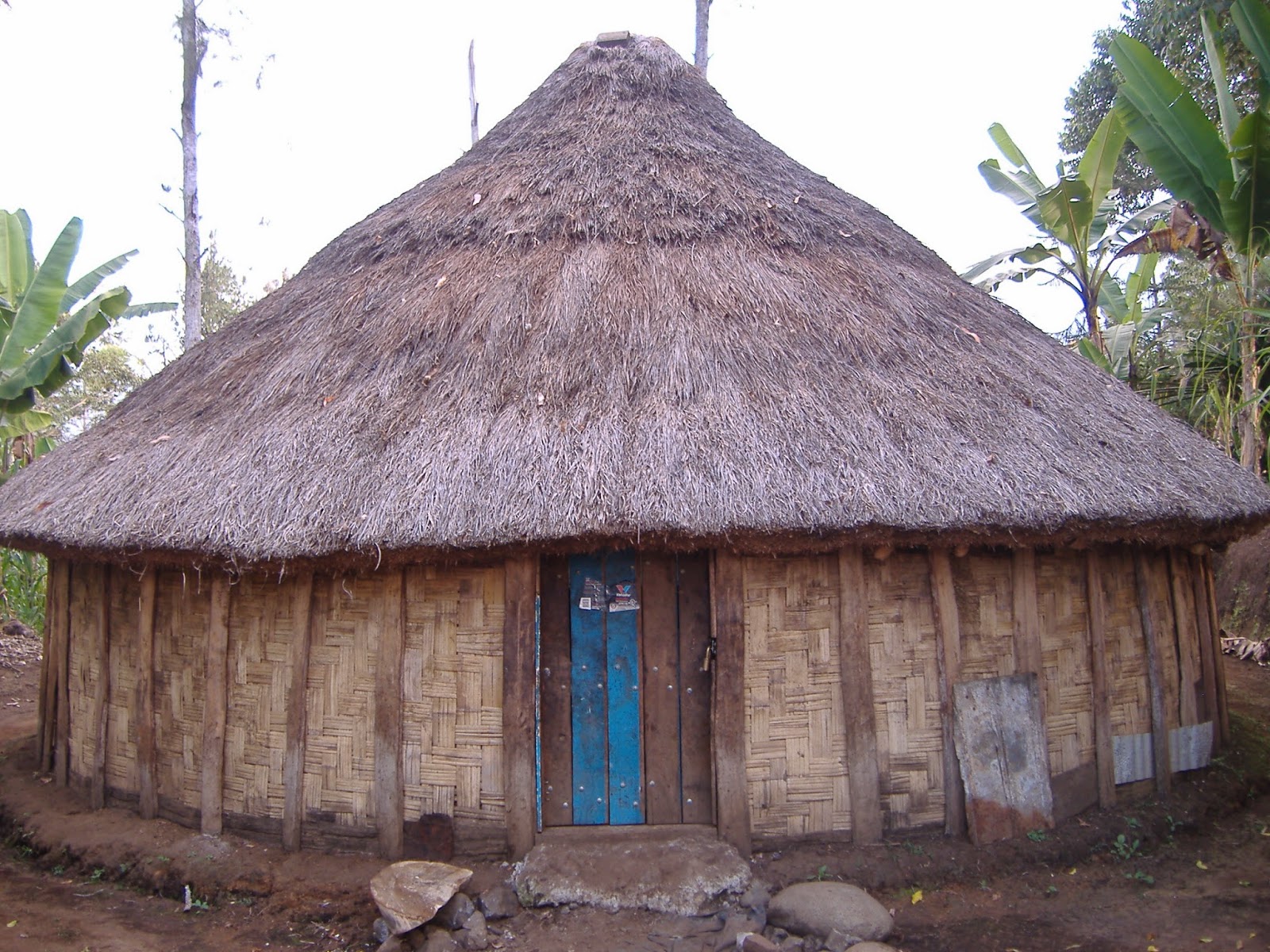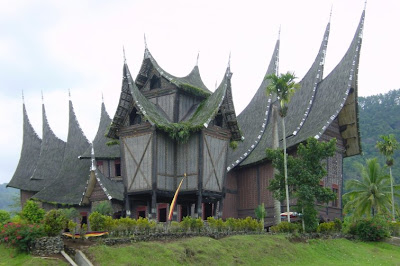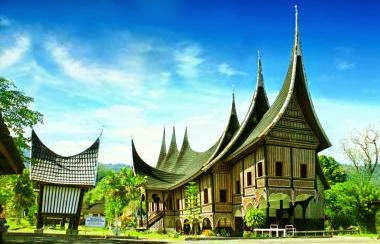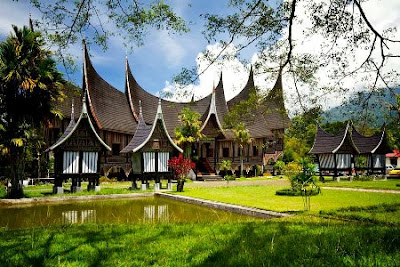Bali Province consists of a collection of several islands where the largest islands of Bali and some smaller islands, namely Nusa Penida Island, Nusa Lembongan Island, Nusa Ceningan Island and Serangan Island. Bali Province is located between Java Island and Lombok Island. The capital of Bali Province is the city of Denpasar. Bali province is bordered by East Java Province in the western part, in the south by the Indian Ocean, in the north bordering the Bali Sea, while in the east is bordered by West Nusa Tenggara Province. Arch Temple Bentar Balinese traditional house is identical to the temple of Bentar Temple. Bentar Temple gate consists of two temple buildings that have identical shapes and are placed parallel as the main gate to enter the courtyard of the house or the outermost gate, usually the main entrance of a temple or place of Hindu worship in Bali. Despite having identical shapes with parallel positions, these gates are placed separately from one another with no cover on the roof just like one section facing the mirror and making the building identical. Although it does not have a roof, but this gate is still connected to each other with the existence of an iron fence and a number of stairs on the bottom. In addition to the temple, around the gate there are usually various statues as a symbol of Balinese cultural customs. The building also has a gate of split gates, because the shape of the building as if describing a temple building that split into two. Bali Residential Home Although the Temple Temple of Bentar became the main icon of traditional house of Bali province, but it turns out the traditional house of bali which is actually a building that has a quadrilateral shape in which there are several kinds of buildings that have its own function. The entire building is surrounded by a wall or fence separating from the outside environment or called Panyengker reef / wall boundary house. In addition to the famous Chinese state of Feng Shui rules in arranging the layout of the house, the traditional Balinese house also has its own rules regarding the procedures, layout, and design of the house to be occupied as well as the holy buildings in Bali, with various terms and rules derived Of the Vedic scriptures. The rule is called Asta Kosala Kosali. Asta Kosala Kosali is the procedure of placing land for residence and holy buildings. Based on the anatomy of the homeowner's body. Uniquely, the benchmark measurement is based on the size of the homeowner's body so that the size of the house in accordance with the homeowner. The unit of measure is not in meters but Amusti (size or dimension for the fist size of the hand with the thumb facing up), Hasta (the size of an adult human hand span from the wrist of the middle of the hand to the open middle finger), Depa (the size used between Two hand spans stretched from left to right) and several other units of measure.
The philosophy contained in Asta Kosala Kosali is the awakening of harmony and dynamism in life when achieved a peaceful and harmonious relationship between three aspects or the so-called Tri Hita Karana. Aspects that include Tri Hita Kirana are pawongan (human or homeowner), palemahan (location or environment where the house is built) and parahyangan (spiritual). This philosophy describes the formation of a synergistic relationship between man and his God, man with his fellow man, and man with nature. Asta Kosala Kosali became the main benchmark of the corner and direction of the building inside the traditional house of Bali. The north-east angle is a sacred area or a good area so the temple is placed at this angle, while the south-western corner is considered lower or the bad area so that the kitchen position is placed at this angle. In addition to the layout, the construction of the building on the traditional house of Bali is also based on the concept of Hindu religion called Tri Angga. Tri Angga is a hierarchy or tier consisting of Nista, Madya and Utama. Nista reflects the lowest hierarchy of a level shown through the foundation of the building or the foundation of the building as the support of the building above it. The material is made of brick or mountain rocks neatly arranged in accordance with the dimensions of space to be built. Nista also reflects the underworld, the nature of demons or lust. Madya reflects the center of the building shown in the form of walls, windows and doors. Madya also reflects the strata of man or human nature. While the Main reflects the symbol of the upper building shown in the form of the roof of the house. They believe that the upper part is the most sacred place in the house and is described as the dwelling place of their ancestral deity or deity. The material used in the traditional house of Bali is the roof of fibers and reeds.
The arrangement of the home page also follows the concept of Tri Angga, namely Nista Mandala, Madya
The composition of the home page also follows the concept of Tri Angga, namely Nista Mandala, Madya Mandala and Main Mandala. Nista Mandala is the back of the page devoted to palemahan, Madya Mandala is the middle part which is devoted to pawongan or penguni home and Main Mandala is the front that is devoted to the holy place or parahyangan. The architect or designer of a traditional Balinese house is called Undagi. In the process of making the Undagi guided by Asta Kosala Kosali so built some buildings in the traditional house of Bali as follows.
1. Angkul-angkul Angkul - angkul is the main entrance and the only one into the traditional house of Bali. Its function is like Temple Gate of Bentar at Pura that is as entrance gate. But unlike the Temple Gates of Bentar, angkul - angkul has a roof that connects both sides. The roof is a pyramid and made of dried grass.
2. Aling - aling At the entrance (angkul-angkul) there is a wall called aling-aling. Aling - aling in the form of a bulkhead wall made of stones as high as 150 cm. Aling - Aling is a barrier between the angkul - angkul with the yard of the house and the holy place. In addition, aling-aling is also used as a switch to enter the road so that to enter the house should be sideways to the left and when out later through the right side of the entrance. It is used to block the inward view from the outward direction directly so as to provide privacy to the homeowner and also as a barrier to the influx of bad / bad influences. The existence of this aling-aling improves the positive space properties that arise due to the wall divider that surrounds the house or called penyengker. Space inside the penyengker, is the space in which there are activities and human activities. While penyengker is the boundary between positive space and negative space. In addition to the wall today many use the statue as an aling-aling.
3. Sanggah or Pamerajan (Pura Keluarga) Sanggah or Pamerajan is a sacred place for all residents located in the northeast corner. Prayer and praying for the ancestors are done here.
4. Bale Meten / Bale Daja Meten / Bale Daja is a bedroom for the head of the family or a girl. Bale Meten is also called Bale Daja because it is placed in the northern area (kaja). Bale Meten is rectangular and consists of two bale that are located on the left and right of the space. Bale Meten can use sesaka / pole made of wood which amounted to 8 (sakutus), and 12 (saka roras). Bebaturan or the lower part of the bale is built higher than the yard and becomes the tallest building inside the traditional house of Bali. In addition to aesthetics, this is also done to avoid ground water absorption.
5. Bale Dauh / Bale Tiang Sanga Bale Dauh or Bale Tiang Sanga or often also called Bale Loji is a place to receive guests and beds of teenagers or young children located in the West. Bale Dauh consists of one bale with the position inside and rectangular. Bale Dauh uses sesaka or pole made of wood and has a different name depending on the number of poles owned. Bale consisting of 6 poles called sakenem, when the pole amounted to 8 called sakutus / astasari, and when the pole numbered 9 called sangasari. Bale Dauh building uses bebaturan with a lower floor position than Bale Dangin and Bale Meten.
7. Bale Dangin / Bale Gede Bale Dangin / Bale Gede is a building that functioned as a place of traditional ceremony and also as a place to rest or sleep when not being used for the ceremony. This building is located in the east or dangin natah umah. The building is rectangular or rectangular depending on the number of wooden and bale poles. Bale dangin can have as many as six or sakenem, eight or sakutus / astasari and nine or sangasari and consists of one bale. While the bale gede has 12 sesaka / pole and consists of two bale on the left and right. The setting on Bale Dangin has second floor height after the height of Bale Meten. 8. Paon or Pawaregan
Paon is a kitchen or a place to process and cook food occupants of houses located on the south side of the house or southwest. Paon is divided into two areas. The first area is called a junction, ie the open space for cooking where there is a toaster using a fire wood. While the second area is a room for storing food and kitchen utensils. Balinese people believe that the kitchen is a place to eliminate black magic or butha kala who attached to the house. So that when there are family members who just returned home actually go into the kitchen first before entering other buildings.
9. Jineng / Kumpu Jineng or Klumpu is a rice granary or warehouse where rice is stored. Jineng is located in the southeastern part of the residence or near Paon or the kitchen. The jineng roof is made of reeds and usually jineng consists of two floors where the part is used to store the dry rice while the bottom is paired with bale to store the dry rice, making it easier for the occupants to dry and lift the rice for several days until the rice is completely dry . Its unique building shape inspired many people and made it a hotel with a jineng form with modifications
9. Jineng / Kumpu
Jineng or Klumpu is a rice granary or warehouse where rice is stored. Jineng is located in the southeastern part of the residence or near Paon or the kitchen. The jineng roof is made of reeds and usually jineng consists of two floors where the part is used to store the dry rice while the bottom is paired with bale to store the dry rice, making it easier for the occupants to dry and lift the rice for several days until the rice is completely dry . The unique shape of the building inspired many people and made it a hotel with a jineng form with modifications or make it a bale to relax. When viewed from the geographical side, traditional houses located in the lowlands have differences with traditional houses located in the highlands. Nine buildings that have been described above is a traditional house located in the lowlands. The lowlands are identical to the heavier weather so that the buildings have some characteristic that is, it consists of many open spaces, has a high roof, and also a wide yard. As for custom homes located in the highlands or mountains is very minimalist with only three parts of the building that is, sanggah or temple as a holy place, bale meten as the dwelling and the last bale delod. Because of its location in a cold area, generally the house has a low roof so that the ventilation is less so that the temperature in the house remains warm. The Balinese always start and end a development with a ceremony or ritual. The development process begins with a process of measuring soil called "nyikut karang". Then proceed with caru dredging corals, the sacrificial ritual offerings and ask permission to build a house. After that done nasarin and prayascita. Nasarin is the first stone laying ritual ceremony that aims to ask for strength to make the house strong and sturdy, while prayascita is a ceremony performed by workers or artisans to always be guided and saved during work. The construction was then carried out after all the rituals had been done. In general, traditional Balinese house has a natural and soothing color. With the dominance of chocolate, beige and red brick so as to give a natural impression and not conspicuous. The building materials used vary depending on the economic condition of the occupant. For ordinary people, the walls of a house are usually built using speci made of clay mud, whereas for the more affluent people usually use a pile of bricks. In addition to color, traditional Balinese house is identical with sculpture and carvings. Besides as a sweetener the use of sculpture and carving also has other purposes. As in the statues that symbolize their worship of the creator and also gratitude while carving or sculpture depicts living things on earth that is, humans, animals and plants.


